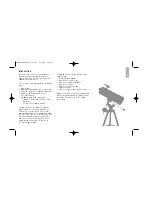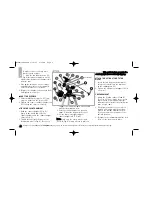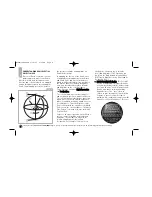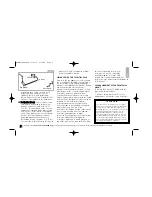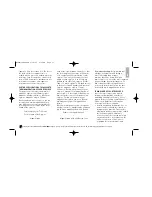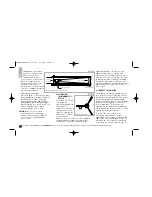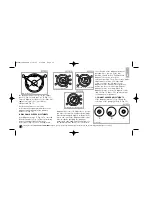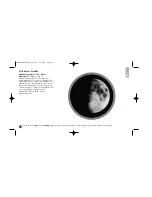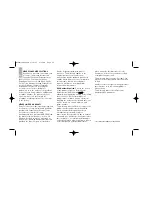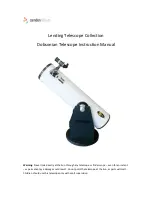
UNDERSTANDING HOW CELESTIAL
OBJECTS MOVE
Due to the Earth's rotation, celestial
bodies appear to move from East to
West in a curved path through the skies.
All stars and celestial objects are mapped
onto an imaginary sphere surrounding the
Earth. This mapping system is similar to
the system of latitude and longitude on
Earth surface maps.
In mapping the surface of the Earth, lines
of longitude are drawn between the North
and South Poles and lines of latitude are
drawn in an East-West direction, parallel to
the Earth's equator. Similarly, imaginary
lines have been drawn to form a latitude
and longitude on the celestial sphere.
These lines are known as R
Riig
gh
htt A
As
sc
ce
en
ns
siio
on
n
and D
De
ec
clliin
na
attiio
on
n..
The celestial map also contains two poles
and an equator just like a map of the Earth.
The celestial poles are defined as those two
points where the Earth's North and South
poles, if extended to infinity, would cross the
celestial sphere. Thus, the North Celestial
Pole is that point in the sky where the North
Pole crosses the celestial sphere. The North
Star, Polaris, is located very near the North
Celestial Pole.
So just as an object's position on the Earth's
surface can be located by its latitude and
longitude, celestial objects may also be
located using Right Ascension and
Declination. For example: You can locate
6
Fig. 6
14
15
16
17
18
19
20
21
22
23
0
1
12
11
10
9
8
7
5
6
4
3
2
13
Rotation
of the
Earth
0
Dec
.
South
Celestial
Pole
Right
Ascension
Star
Celestial
Equator
-90
Dec
.
+90
Déc.
D
e
c
lin
a
tio
n
North
Celestial
Pole
(Vicinity of
Polaris)
Jupiter’s four brightest moons are
easily visible in a telescope. When
Galileo Galilei first observed them
rotating around Jupiter in 1610, he
saw proof that the earth wasn’t
the center of everything in the
universe, as many then
supposed.
Los Angeles, California, by its latitude
(+34
°
) and longitude (118
°
). Similarly, you
can locate the Ring Nebula (also known as
"M57") by its Right Ascension (18hr) and its
Declination (+33
°
).
•
• R
RIIG
GH
HT
T A
AS
SC
CE
EN
NS
SIIO
ON
N ((R
R..A
A..)):: This Celestial
version of longitude is measured in units
of hours (hr), minutes (min), and seconds
(sec) on a 24 hour "clock" (similar to how
Earth's time zones ar determined by
longitude lines). The "zero" line was
chosen to pass through the constellation
Pegasus, a sort of cosmic Greenwich
meridian. R.A. coordinates range from 0hr
0min 0sec to 23hr 59min 59sec. There are
Looking at or near the
Sun
will cause
irreversible
damage to your eye. Do not point this telescope at or near the Sun. Do not look through the telescope as it is moving.
Meade114EQASTR 3/28/07 9:33 AM Page 8



